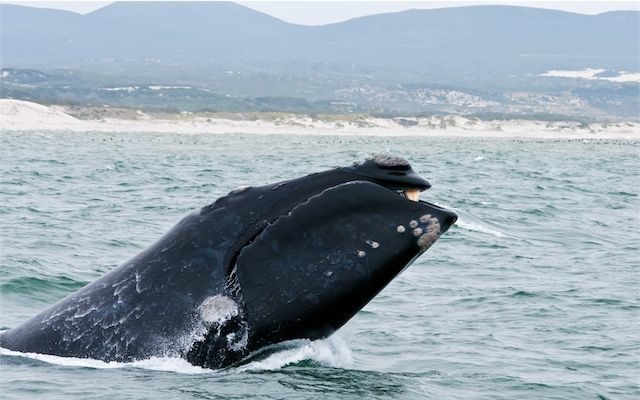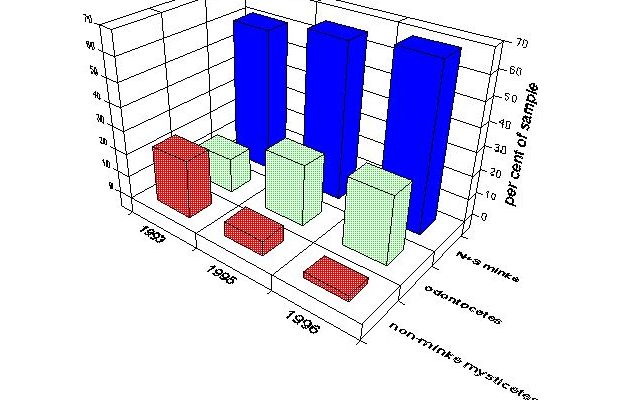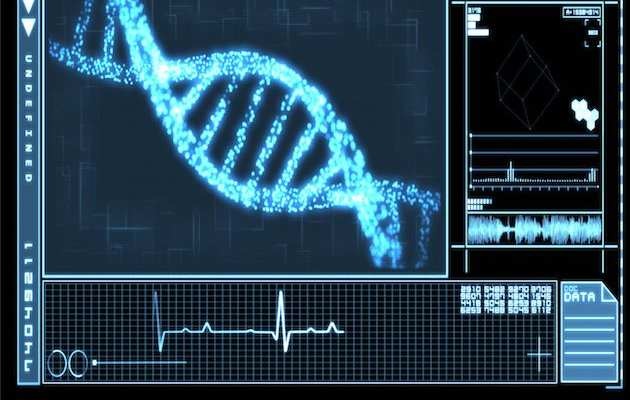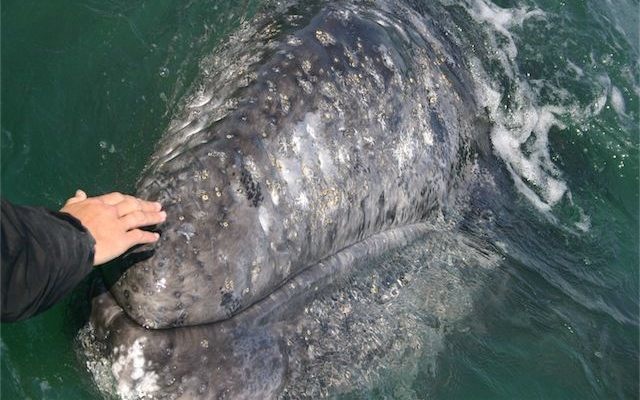Saving Whales with DNA. An EarthTrust-invented global strategy for whale-saving.
EarthTrust’s Saving Whales With DNA Project
is a cutting-edge strategy for ending the global black market in whale meat through the use of DNA analysis, just as important now as when ET launched it.
DNA technology is currently revolutionizing many fields and it is poised to have a huge impact on the illegal trade in endangered and protected species of whales. DNA analysis is the only practical way to verify if a product in the marketplace is a “legitimate” whale species (under IWC regulations) or if it is from a highly endangered species.
EarthTrust invented this method & protocol and introduced it to the world in dramatic fashion. The success of EarthTrust’s efforts to date, which includes peer-reviewed research coupled with deflecting whaling-nation misinformation, has established this strategy as the best chance for conservation of whales and dolphins – the only hope to beat the pirates who will still take whales when they can get away with it.
This a bold project. It seeks nothing less than the near-total global reform of illegal whaling. To accomplish this end, it encourages and involves internationally-renowned scientists utilizing biotechnology on the cutting edge of what is possible. It “marries” these scientists and research institutions to a professionally-conducted framework of “unannounced” international intelligence-gathering which is conducted by skilled investigators. The scientists go “on-site” in the country where the samples were obtained. They use state of the art miniaturized DNA-cloning equipment, to do polymerase chain reaction duplicates of the DNA. The results are analyzed using double-blind checking techniques which establish species identity using two different advanced mathematical models on separate parts of the DNA molecule.
This work has expanded to many organizations and nations as the new “state of the art” since ET’s introduction of it. But it’s still a race against time. A stepwise strategy of using DNA analysis to see whether the sale of “research whale meat” is masking the poaching of endangered species, was conceived of and developed by EarthTrust and is described in detail below. It involves bringing together a network of non-governmental organizations, research institutions, government representatives, and biotechnology manufacturing firms in a precedent-setting program. This strategy and these techniques have been endorsed by a broad spectrum of conservation experts and organizations. This strategy, endorsed by so many, may well be the only one that can truly assure a future for endangered whales. It has already revolutionized the international oversight of whaling infractions, and the IWC itself. In the following paragraphs, we will try to explain how this strategy is meant to affect this complex issue – and why we believe it can work.
Is Whaling Still a Problem?
Canned Whale Meat from Japan Marketplace
Though there exists a growing body of international treaties, laws, and conventions that ostensibly protect wildlife, there is also a huge and growing “hidden economy” of organized crime (with tacit government and industry collusion) that directly hinders the effectiveness of these laws.
Traditional conservation strategies have focused on visible laws, conventions, and treaties due to their accessibility, and great strides have been made in these forums. However, the hidden economy–the real world–has made these gains irrelevant in many cases. As anyone who has traveled internationally knows, wildlife laws and treaties which do exist usually lack effective intelligence-gathering and enforcement provisions and are often simply ignored.
Thus we have a world with many types of protection “on the books” for wild species while the poaching and destruction of these species goes on unabated. Unfortunately, this is becoming the rule rather than the exception.
Japan’s ongoing consumption of endangered whales is one of the best examples. Through illegal trade, Japan has aided the decimation of populations of humpbacks and other whales while publicly remaining a member of the International Whaling Commission (IWC),which has pledged to conserve these whales. A number of other nations have been implicated as suppliers: whaling has now become a de-centralized illicit activity much like drug smuggling, driven by “caviar level” market prices which can reach hundreds of dollars per pound. This means that the “whaling moratorium” and the “whale sanctuaries” may be only as good as our ability to police them in retail markets. Japan’s policy has been to flatly deny any large-scale trade in illegal whalemeat. All meat looks alike, and Japan’s government has each year dumped “research whaling” meat on the market to help obscure illicit products.
Why haven’t the IWC, the USA , or independent scientists taken care of this?
The IWC has no enforcement power of its own, nor does it have the authority or funding to poke around inside member nations. Rather, the policies set at the IWC must be backed up by the governments of the member nations.
In order to ensure that the samples purchased are truly representative, they must be purchased “undercover”, which is to say without “tipping off” the seller that an investigation is underway. Several US agencies currently have, in the case of whaling, both the technical capability and the legal mandate to enforce whaling regulations. However, due to considerations of national sovereignty, it would be considered “spying” if a nation unilaterally sent in a DNA research team to do market testing in another nation.
As for independent DNA scientists, few have the funding, inclination, contacts, or training to engage in “undercover work” on behalf of conservation conventions like the IWC or CITES (Convention on International Trade In Endangered Species). Notably, no one conducted such an investigation before EarthTrust.
Thus, a gap has developed: there is a need for independent DNA reality-checking of the trade in endangered and restricted wildlife products (such as whales and dolphins), and the technology is now available to collect this information. But who is to do it? Until an international monitoring scheme is developed and incorporated into IWC regulations, the answer must to a large extent be Non-Governmental Organizations (NGO’s). Practically speaking, at this point this means EarthTrust and its offshoots, funded by forward-looking individuals, foundations, and corporations.
Using the techniques demonstrated by EarthTrust, notably “in situ DNA amplification”, it is now possible to gather accurate field data anywhere in the world, and compare genetic sequences to find out just which animals are being killed. As catalogs of DNA “type sequences” are built up, it becomes increasingly possible to trace back wildlife products to their species, area of origin, subspecies, sex, and even lineage. This is the single most powerful tool available to bring illegal trade to light and under control: even after an animal is killed and cut into tiny pieces, each piece can still tell the story of that animal’s existence.
Background: EarthTrust’s Pioneering Work on Whale Meat DNA
This ongoing action plan is an outgrowth of EarthTrust’s original 1993-95 DNA initiatives. Anecdotal evidence of the widespread availability of “protected species” whalemeat, and dolphin meat sold as whalemeat, in the Japanese marketplace had been known for many years. EarthTrust program strategist DJ White had since the mid-1980’s sought to utilize DNA technology for market-testing of whalemeat. Working with Project Director Sue White and other EarthTrust staff, he designed an initial two-phase project which began in 1993 with the undercover collection of meat samples in Japan. The second phase of this effort involved sending leading whale biologist C. Scott Baker to Japan to clone the DNA of the samples for export and analysis.
Scott Baker analyzing DNA in Tokyo hotel room
The results were reported to the Scientific Committee of the IWC in May of 1994, and published in the journal “Science” in September 1994. The data indicated the widespread availability of meat from many types of “protected” whale, including humpback and fin whales, as well as many samples of dolphin meat falsely sold as “whale”. To a large extent, it was this study which ignited the high-level international enthusiasm for whale DNA as a tool for enforcement, and fundamentally changed the way whaling infractions could be policed. The ripples are continuing to spread into this century.
Why mtDNA and PCR are Useful in Saving the Whales
The cells of every animal each contain a miniature library of information, encoded in the base-pairs of nucleotides in molecules of DNA. There is enough information in each DNA molecule to build a complete creature from scratch. These information sequences are unique, and can potentially provide us with enormous amounts of information. In fact, DNA identification has become the pre-eminent tool of forensic criminology, since it can establish the identity of an individual from hairs or bodily fluids. It is a much simpler task to use DNA to identify species or subspecies of animals, since the genetic variation between different species and breeding populations is quite notable and unambiguous.
There are two types of DNA in a cell, “nuclear” and “mitochondrial”. Due to the fact that it mutates less rapidly and passes only from the mother’s side of the family, mitochondria DNA (mtDNA) analysis is very useful in establishing species and lineage. It is also reasonably quick and cheap. In the EarthTrust studies, different “control regions” of the mtDNA are compared with a catalog of “type” sequences known to come from specific whale species and populations. In this way, unambiguous determination can be made of the species, sex, and gross geographical origin of the unlucky whale or dolphin in the sample. As the catalog of “type” samples grows, increasingly exact localizations of the whale’s breeding group and place of origin are possible.
However, there are practical difficulties which have prevented the use of this tool to gather intelligence within “whale-consuming” nations prior to the EarthTrust initiative. Chief among these is the wording of current CITES regulations, which gives the “office of management authority” of each CITES member nation the ability to delay – indefinitely – the export of tissue samples. Even non-controversial tissue samples exported from Japan can take more than 3 years to receive permits. Thus, CITES, which was designed to prevent the trade in endangered species, has in this case been used as an effective barrier to prevent international inspection of the whalemeat market.
This is where “in situ PCR” comes in. PCR stands for Polymerase Chain Reaction, which is necessary for all quantitative DNA studies. Simply put, PCR takes a few original DNA molecules and creates millions of exact copies by providing the proper chemical and temperature conditions for DNA to replicate itself. This many-million-fold amplification may be done by a person of the proper training with only a small suitcase of equipment: a PCR thermal “MiniCycler” and the necessary chemical reagents. The resulting “cloned” DNA may then be separated chemically from the original tissue sample. Since it is not whalemeat or a whale product but only a “chemical snapshot” of whale DNA, it is not subject to CITES restrictions. The amplified DNA may be legally shipped anywhere necessary for analysis. This makes it possible to conduct investigations and get results with a reasonable lag time. In the case of Japan, it is providing the first definitive look at a criminal “whalemeat” market that has for decades been out of control.
Reform of CITES regulations is needed, to allow direct export of tiny DNA samples for analysis by international conservation conventions. Unless and until that happens, though, “in situ PCR” using the EarthTrust project protocols will be the main tool of those who wish to stop the illegal whale trade.
Past Surveys of Japan’s Whalemeat Market, and Reactions
The Asahi Shimbun newspaper announced on November 9, 1994 that in response to the EarthTrust study and foreign criticism, Japan had begun its own program of DNA product testing… and that it had already collected its samples. At the May 1995 IWC meeting, Japan turned in preliminary results which showed multiple species in the marketplace but did not find evidence as explosive as the initial EarthTrust study.
Certainly, Japan’s authorities had been sensitized to the potential embarrassment of illicit whalemeat for sale in its markets. However, Japan’s new adoption of DNA market-testing does not necessarily reflect a change in national attitude. In fact, old conservation hands who have worked the IWC for many years predicted that Japan would first denounce the EarthTrust work, and then do a version of its own – with controlled results.
Thus, it is necessary to conduct ongoing undercover surveys of Japan’s marketplace, and other whalemeat markets. This is the needed ongoing data for IWC decision makers, and will point out the inherent conflict of interest in any nation monitoring itself. A disparity between results will presumably encourage IWC member nations to lean towards international verification instead of relying solely upon a nation’s internal DNA testing.
Moreover, the entire future of the IWC and such treaty organizations is now cloudy. As human commerce transitions into a time of relative scarcity and resource limitations, there will be no substitute for hard data.
Other organizations have now hired the technicians ‘spun off’ from the original ET campaign, and these people comprise the backbone of the international DNA effort on whaling.
Small Cetaceans – Special Considerations
The fact that dolphins are increasingly being sold as whalemeat in Japan is noteworthy for both conservation and strategic reasons. Based on the prices paid by EarthTrust investigators for dolphin-sold-as-whale, the rate for a dolphin sold on such a market is about $2800. This is enough to create problems for dolphins not only in Japan, but potentially around the world.
While all dolphins have been added to CITES Appendix 2, small cetaceans are not actively protected or otherwise managed by the IWC or any other body. There are many places around the world where dolphins may be caught easily en masse. If it remains easy to substitute dolphin for whale on Japan’s market, there is no reason to think that market forces will not create a flow of dolphin meat into Japan from other areas of the world. This may already be occurring. In the ’70’s Japan set up numerous “local” operations in other countries to obtain whalemeat, and they are now doing similar deals in a number of fisheries. A system which swallowed up 48,000 illegally-caught Soviet-whaled humpbacks without detection will not blanch at importing dolphins if there is a market. For this reason, EarthTrust will seek funding to continue to develop and improve techniques for the identification of small cetacean tissue; and when possible we will send a small cetacean DNA specialist along with the primary whale DNA researcher.
It is significant that dolphin-sold-as-whale constitutes mislabeling, and there are a number of reasons – including risks of heavy-metal poisoning – that Japanese citizens may be expected to want to see this practice cease. It is important not just to identify products as coming from small cetaceans, but to identify WHICH small cetaceans, from which oceans, are being sold as whalemeat.
This practice is a significant danger to dolphins and must be addressed. DNA identification of these dolphins in the marketplace can provide an effective way of halting or greatly curtailing the practice… and may be in time to prevent significant international trade from developing.
Conclusion
A gap has developed: there is a need for DNA reality-checking of the trade in endangered wildlife products (such as whales ) , and the technology is now available to collect this information. But who is going to do it?
Whaling on “protected” whales is continuing, despite being banned by international conservation conventions. However, due to inherent constraints on treaty conventions, governments and scientists, it is difficult for them to monitor illegal trade in the marketplaces of other nations and this has not occurred.
Non-Governmental Organizations (NGO’s) like EarthTrust, however, are not hindered by such constraints, and are in fact in an excellent position to utilize DNA analysis to police the trade in endangered wildlife products throughout the world.
EarthTrust is taking the initiative to try bringing more scientists and NGO’s together to conduct these studies because this is a strategy which can save the most endangered whales. It can also set a precedent to establish real international conservation of wildlife species in a quantifiable, enforceable way. DNA is becoming widely accepted as a standard of truth by the people of the world, and the chance to take and hold this high ground is one we must seize and maintain.
Japan conducted an international campaign to attempt to discredit the initial EarthTrust work, and is now doing its own. Japan pressed for our DNA information to not be used at IWC meetings — instead presenting its own studies. Japan is also taking the position that it interdicts most illegal whalemeat. This may only be effectively countered by initiatives from the NGO conservation community to investigate and define the ongoing channels of illegal whalemeat flowing into Japan and the content of its whalemeat markets.
The relatively new tool of DNA analysis has now demonstrated itself as an extremely powerful means of tracking and exposing the underground whalemeat industry. By building on this success and implementing the tactics described here, it is conceivable that whaling could be ended in coming years.
Regional and National Consequences and Considerations
It is the strong stated policy of the United States to honor the International Whaling Commission moratorium on whaling and to enforce this moratorium when possible. It is also federal and state law to protect whales
within coastal waters as a valuable resource. The reason is simple: most species of great whales were driven to commercial extinction by commercial whaling by the mid-70’s. Even with total protection granted them by the USA, there has been little noticeable population recovery in any species except the California Gray Whale.
The reason is just now becoming clear. Whaling never truly ended, it just decentralized.
EarthTrust has distinguished itself since 1975 at tracking down rogue whale-killing operations, but in many cases it was simply too late. For instance, virtually the entire humpback population of the Bahamas was exterminated by a single “pirate” whaling ship, the Sierra, in the ’71-72 season. These are whales which, if alive today, would be breaching along the northeast coasts of the United States. That’s how few ships it takes to devastate a population. The whale meat of the Sierra was shipped to Japan, which has a taste for humpback. In fact, last year it was revealed that the former USSR killed more than 48,000 humpbacks even after they were officially “protected” by the IWC – and sold the meat to a voracious Japanese black market… to the same trading firms which still do business today.
There is literally no way to follow the whales during their epic migrations outside of US waters. Whale meat is smuggled into Japan by a complex web of bogus corporations and falsified documents (some sample documentation in appendices). Therefore, the only possible approach to end the threat of whaling to North Atlantic whales – and whales elsewhere – is to close down the world’s only high-paying black market to this meat. This is just what EarthTrust proposes to do, with your help. These whales are protected under US law, the IWC, and CITES, and they are genetically distinct. We can, therefore, bring strong science to bear to end the lucrative commerce in their body parts.
Other Protected Species: An Ancillary Opportunity
EarthTrust does not plan any extensive DNA analysis of other than cetacean tissue (unless it’s sold as whalemeat), but this reference is offered as a general observation.
Mammalian tissues are very similar, and the reagents and procedures necessary to conduct PCR on cetacean tissue will also work on other mammals. There are many cases where it would be valuable to know the area of
origination of wildlife products, and many of the same nations which will be surveyed for whale products will also be trading in these other animal products. It should be possible to take advantage of the fact that our experts will be visiting these nations with fully-functional DNA amplification labs. With proper coordination, PCR can be done on samples of these other species and the amplified DNA forwarded freely to analysts specializing in the animals in question.
There is no doubt that this can be a powerful tool in the conservation and management of many species; our whale work is just a beginning and a precedent-setter. Indeed, work on non-mammalian tissues such as reptiles, birds, and fish is overdue. (Someone should be market-analyzing shark fins!) Organizations or individuals interested in supporting or undertaking this should contact EarthTrust.
Where will this lead? Innovating future technology
EarthTrust is investigating the adaptation of DNA applications developed for human use to the cetacean-meat monitoring project. One attainable goal should be field test kits similar to those used in human
murder investigations, which have a series of yes/no tests which taken together can quickly indicate – right at the site of purchase – a whale or dolphin’s species. This approach, based on existing technology, could be possible within this decade, making “screening” monitoring possible by any layperson without a lab… broadening the sample size immensely and shortening the “results” time to days or hours.
Perhaps even more exciting, a breakthrough in new technology (reported in a recent Scientific American) indicates that it should soon be possible to develop electrical sensors which respond to specific DNA sequences. At that point, doing end-market analysis of whale meat – and other protected species products in the 21st century – may, for some species at least, become almost instantaneous. Of course advances like this can only happen IF the momentum is maintained for the use of forensic molecular biology techniques in market testing. The mere existence of technology, however, does not mean it will be applied to conservation issues, as we found out when we inquired to see if anyone was using DNA analysis to check out whalemeat and the answer was “no”. Sometimes, you have to just roll up your sleeves and do it yourself.
Much is at stake. We face a future which will be hard on most species. Pioneering the acceptability of DNA end-use monitoring is vital as is the timely adaptation of technology as it arises.
If this project goes forward, (that is, if funding is obtained to continue it), we can realistically project arriving at a time when pirate whaling and “dolphin meat sold as whale” is simply no longer viable in the marketplace. With your help we can ensure a brighter future for all cetacean species and work towards protecting biodiversity for generations to come.
APPENDICES
Historic Precedents Being Established For Other Conservation Issues
In a broader sense, this project isn’t just about whales and dolphins, and cannot be. By the very doing of this project, precedents are being established that will affect the way conservation is done into the next century, on mammals, birds, reptiles, and many other controlled species. These precedents cut deeply. They include:
• Helping establish the legal status of amplified DNA as a conservation tool. In 1994 at CITES the US declared that amplified DNA is NOT subject to the permit restrictions of raw tissue. This was done in response to the EarthTrust initiative, (in fact, the U.S. CITES delegation included the “Science: article on the EarthTrust-sponsored study in its official submission to CITES). This has opened the door to investigations of wildlife poaching, and wildlife research, which were impossible before.
• Development of new field protocols for sample collection and amplification, including the necessity of “unannounced” sampling to avoid skewed results.
• A breaking of the “national sovereignty barrier” to management data collection, which creates a mechanism for direct NGO involvement in the monitoring and enforcement of international conservation conventions.
• Establishing the necessity of multiple-lab, multi-nation double-blind techniques for credible results. A nation should not be charged with regulating its own illicit behavior.
• Riding out the initial wave of strident resistance from wildlife-exploiting nations to establishing these new techniques as “conventional”, which is going very well.































